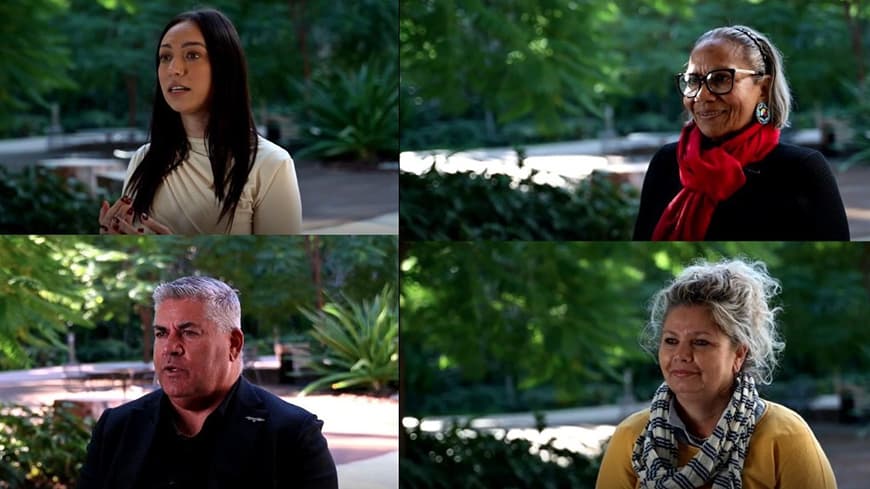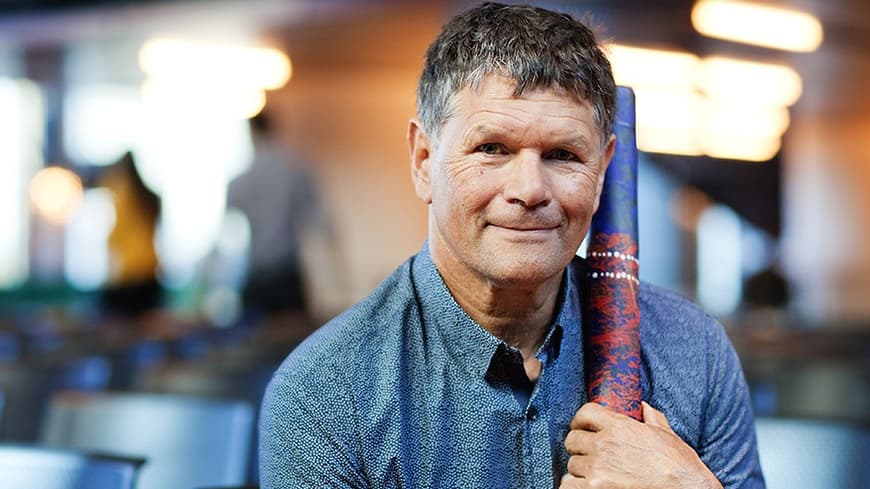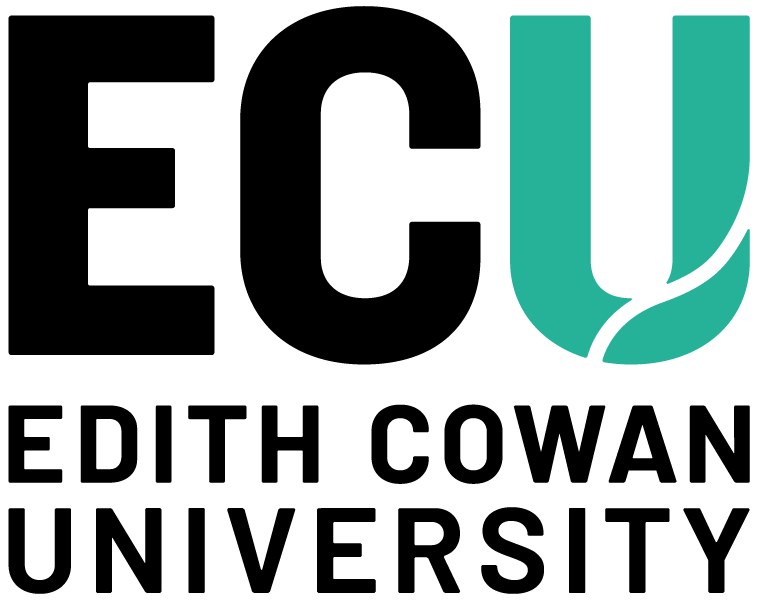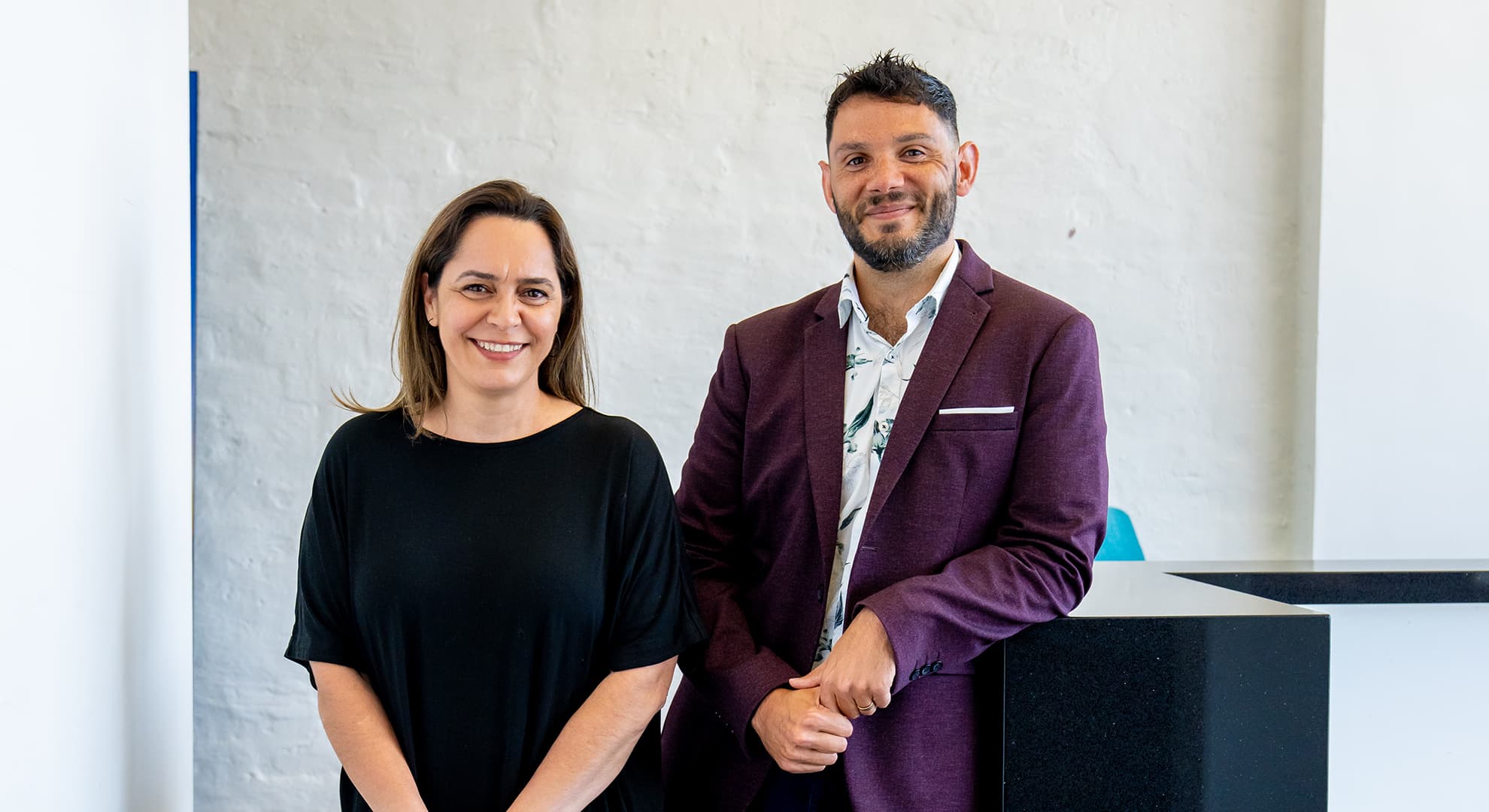ECU's new Cultural Narrative Framework represents a milestone commitment and opportunity to lead with cultural integrity, and foster inclusive, interconnected narratives that reflect the diversity of local, national, and global communities.
A NAIDOC Speaker Series has been launched by ECU that will unpack the new Cultural Narrative Framework in bold conversations with Aboriginal cultural leaders – you can register to attend in person or online for the first of these FREE events on Wednesday 30 July, below.
The Cultural Narrative was shared firstly with WA Aboriginal and Torres Strait Islander leaders at ECU's Boordawhan Bidi event, a bringing together of more than 100 leaders across a range of sectors and interest groups. The strategy was incredibly well received and endorsed as best practice by many who attended.
 WA Aboriginal and Torres Strait Islander leaders contributed their feedback at ECU’s Boordawhan Bidi event.
WA Aboriginal and Torres Strait Islander leaders contributed their feedback at ECU’s Boordawhan Bidi event.
Deputy Vice-Chancellor (Students, Equity and Indigenous) Professor Braden Hill describes the document as a powerful reflection of the NAIDOC Week 2025 theme, highlighting how the Cultural Narrative Framework sets a significant foundation for future generations of students and staff at ECU, and contributes meaningfully to the broader education community.
The Cultural Narrative project was led by acclaimed Wardandi and Badimaya curator, writer and advocate, Clothilde Bullen OAM. A trailblazer in the Australian arts and cultural landscape, she has spent her career championing the voices of Aboriginal and Torres Strait Islander artists and arts workers, and advocating for their inclusion, development and representation across the arts sector.
"Since joining ECU, Clo has been instrumental in shaping the University's cultural identity, finalising the Cultural Narrative strategy and framework as Lead, Cultural Strategy and Development before transitioning to her current role as ECU's Manager of Art, Culture, and Collections," said Professor Hill.
"This work envisions ECU as a vibrant hub of cultural exchange, where meaningful conversations and partnerships foster innovation, belonging, and community impact.
"By embedding Indigenous perspectives and embracing diverse ways of knowing this new framework aims to break down silos and create transformative opportunities for students, staff and external collaborators alike.
"The ultimate purpose is to ensure that place, identity, respect and relationships remain central to ECU's growth, enabling the university to thrive as a space of connection, inclusion, and learning for generations to come.
Cultural Narrative Framework
Clothilde explains that the Cultural Narrative Framework supports the integration of its fundamental principles into all aspects of university life, from curriculum and research to campus design, governance, and partnerships, as well as student life and creative communities.
"Through the guiding structure of The Life Layers and Birdiya Yok Bidi, this framework creates a foundation for collaborative relationships, responsive practices, and sustainable growth, ensuring that ECU's identity and impact are shaped by reciprocity, respect, and shared knowledge," said Clothilde.
Understanding Cultural Narratives
A cultural narrative is a thread of interconnected stories, values, histories, and practices that define and shape the identity, meaning, and shared experiences of a community.
Such narratives reflect the ways in which individuals and groups make sense of their past, live in the present, and aspire toward a future, grounding these experiences in place, relationships, and cultural expression.
"Within universities in Australia, dominant cultural narratives tend to foreground and prioritise Western knowledge systems, histories, and perspectives," said Clothilde.
"Recognising this, at ECU the ambition of this strategic framework is to re-balance and centre Noongar culture, perspectives, and knowledges at the heart of its operations and identity. This acknowledges the significance of ECU's presence on Whadjuk, Wardandi, and Mooro lands, and honours the deep connection to Country and the principles of reciprocity, storytelling, and custodianship.
While Noongar perspectives are central, ECU's cultural narrative extends beyond them -growing into a rich and layered story that reflects local, regional, national, and global communities who all contribute to the University's identity and purpose.
This document brings together the embedded Noongar cultural narrative with the broader University narrative, positioning them equally and with a shared sense of direction and commitment.
Purpose and Intent
This strategic framework is grounded in cultural narratives that help shape and inspire ECU. It reflects the essence of place, storytelling, and connection, as understood through Aboriginal and Torres Strait Islander knowledge systems. These narratives are not positioned as isolated elements - they are powerful influences that can positively shape all areas of university life.
It also positions cultural diversity as a strength, promoting the infusing of a wide array of knowledge systems and cultures into ECU's teaching, research, student experience, corporate activities, community and public engagement.
Its aim is to embed this cultural foundation deeply into ECU's values, decision-making, environments, and policies - ensuring that it actively contributes to how students, staff, and the broader community experience the University. To understand how this will be realised, it's important to explore the core ideas that underpin the approach.
There are two foundational cultural narratives at the heart of this framework. One is 'Life Layers', the other is 'Birdiya Yok Bidi'. Understanding these narratives is crucial to understanding this framework.
Life Layers: A framework for action
The Life Layers foundation provides ECU with a cultural lens and strategic base that complements existing approaches to achieving our goals as an academic community. It offers an alternative way of thinking - anchored in place, identity, and relationship - that can inform both everyday decisions and long-term planning.
These are the five Life Layers:
- Ngarda (Earth/Subterranean)
- Kep (Water)
- Kaata (Hills)
- Moort Boodja (Community/Ecosystem)
- Djinda Worlal (Stars/Constellations)
The Life Layers offer both symbolic meaning and practical guidance, shaping how we design, activate, and experience ECU's campuses. Together, they reflect an interconnected ecosystem of relationships and ideas that position the University as an evolving space of learning, sharing, and activation.
ECU City Campus Life Layers: A narrative at the heart of the city and this strategy
The Life Layers narrative emerged from the leadership, guidance, and cultural authority of Whadjuk Noongar Elders, in deep partnership with ECU through the City Campus Project. These relationships provided the foundation for a place-based narrative that reflects the energy, intent, and shared purpose behind this framework.
Initially articulated by Dr Richard Walley in consultation with Whadjuk Noongar Elders, the narrative reflects the enduring connection between land, water, and culture. It has guided and shaped the architectural and cultural design of ECU's new City Campus.
 Whadjuk Noongar Elder Dr Richard Walley.
Whadjuk Noongar Elder Dr Richard Walley.
The Life Layers are embedded into the physical and symbolic identity of the campus. Colours associated with each layer are integrated into the façade, while artworks, signage, and internal spaces reflect their meaning. For example, Kep (Water) connects to Derbarl Yerrigan (Swan River) and acknowledges the ancient underground swamp systems that once sustained the Whadjuk people.
This thoughtful integration allows all who enter - students, staff, visitors, and community - to engage with a living story of place. It fosters connection, respect, and a deeper understanding of the significance of Boorloo (Perth) as the campus's location.
- Download ECU's Cultural Narrative Framework
- Read more about Clothilde Bullen OAM, who received an OAM earlier this year for her contributions to Indigenous Arts.
Deputy Vice-Chancellor (Students, Equity and Indigenous) Professor Braden Hill
NAIDOC Speaker Series
Event 1 details
When: Wednesday, 30 July 2025, 5:30pm – 7:30pm
Where: ECU, Whadjuk Boodjar, Joondalup Campus, Building 32 Lecture Theatre, 270 Joondalup Drive, Joondalup
RSVP: Register to attend in-person or via livestream by Friday, 25 July. FREE ticketed event, open to the public.
Access: The venue is fitted with a T-Switch hearing loop system and is wheelchair accessible. If you have any accessibility needs to participate in the event, please contact ECU Corporate Events.

 ECU Aboriginal leaders Clothilde Bullen OAM and Professor Braden Hill.
ECU Aboriginal leaders Clothilde Bullen OAM and Professor Braden Hill.



